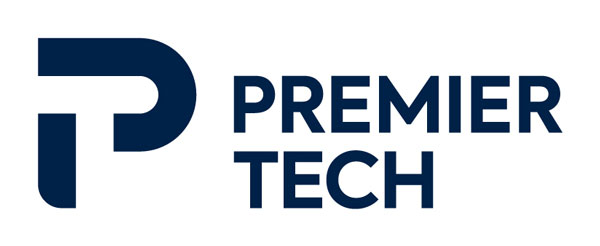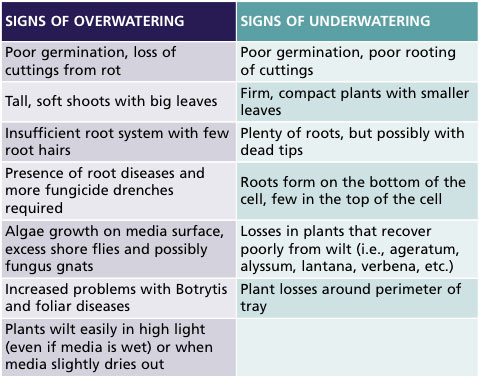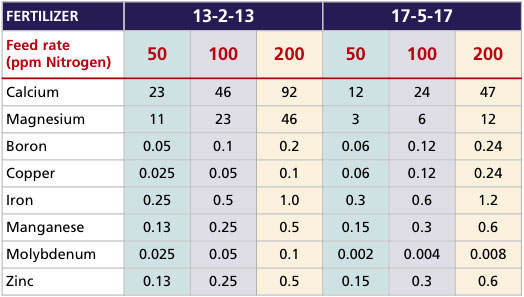9/1/2020
Starting Smart
Troy Buechel

As most growers know, young plants require more care and are less forgiving than mature plants when it comes to watering, fertilization and environmental control. Below are tips for choosing the proper growing medium, and the best watering and fertilization practices that can help to produce quality plugs and liners.
Choosing the right growing medium
Choosing the proper growing medium for your specific situation is important for producing young plants. For plugs, there are fine peat/fine vermiculite seed germination media that retain extra water for hot, sunny days or fine peat/fine perlite seed germination media that provide extra drainage and faster dry down for dark, cloudy winter months.
For seedlings that are sensitive to overwatering or germinate slowly, a lower water-retaining, peat-perlite seed germination medium is preferred, regardless of the time of year. Crops that are less sensitive to overwatering and/or germinate rapidly may perform best in a peat-vermiculite seed germination medium.
For liner production, seed germination media can be used, but due to their fine texture, can retain more water or have lower air porosity than what a grower requires. Growing media for liner production are formulated with fine or coarse peat, coarse perlite (the same type used in transplant media) and may have coir or other components. Often fine peat moss is used because it’s micro-screened to remove small tree roots (sticks) compared to fibrous peat that’s coarse-screened and may have some sticks, but the use of coarse perlite and coir fiber can be combined with any type of peat to increase air porosity and allow for faster dry down of the growing medium.
Below left, Figure 1. This is the color that the growing medium should become before rewatering as seeds begin to germinate.
Below right, Figure 2. The surface of a peat-based, seed germination growing medium should turn light brown before rewatering to encourage proper root development.
Growing medium handling
If you use compressed bales or even use loose-fill bags, minimize the processing of the product whether bales are decompressed or product passes through a potting machine. Over-processing breaks peat fibers and crushes perlite and vermiculite. Fine particles decrease air porosity in the growing medium, making a less desirable environment for root development. Often, loose-fill products are preferred, since less handling is required.
When filling trays or sowing seed, don’t compact the growing medium and avoid pressing growing medium into individual cells, nesting filled trays on top of each other, using high water pressure to water-in trays, etc. Compaction greatly reduces air porosity and causes poor drying.

Watering
Watering is an important factor contributing to root development and root disease. Typically, when seeds are sown or cuttings are stuck, the growing medium is kept wet until seeds germinate or roots form on cuttings. This is an arduous task because excess moisture is ideal for root diseases, especially Pythium and Phytophthora, encourages algae growth on the growing medium surface, and attracts shore flies and fungus gnats. Therefore, it’s best to allow the growing medium surface to dry slightly between watering or misting (Figure 1). It’s also beneficial to purchase a growing medium with a pre-incorporated biofungicide to reduce the incidence of root diseases in young plants.
Table 1. Signs of overwatering or underwatering in plugs and liners.
Once seeds have germinated and cuttings are rooted, it’s important to reduce watering frequency to allow the growing medium to dry further. Typically, the surface of a peat-based growing media is nearly black in color when wet, so the surface should be light brown before reapplying water (Figure 2). This will encourage roots to grow down to the bottom of the plug/liner and promote better branching and growth of root hairs.
Shoots are also more compact, firmer and have smaller leaves. Drying the growing medium surface also reduces algae growth, shore fly populations (which feed on algae), fungus gnats and root diseases. Overall, it’s better to grow dry than wet, but keep in mind that plants can be underwatered, which can promote problems (Table 1).
Fertilization and pH management
Fertilization not only addresses the nutritional needs of plants, but regulates the pH of the growing medium. The volume of growing medium in each cell is small, so pH change can occur rapidly. However, applying only 50 to 75 ppm nitrogen with a complete fertilizer when seedlings and liners have few roots limits the plants’ ability to use fertilizer to generate the acid or base to manipulate the pH of the growing medium. Therefore, the alkalinity of the water (mostly a measure of carbonates and bicarbonates in the water) can easily increase the pH of the growing medium. To counteract the effects of alkalinity, acid is injected into the water to drop the alkalinity into a preferred range of 80 to 120 ppm CaCO3 and even lower if the fertilizer used is potentially basic.
Many fertilizers used for young plant production have a high ratio of nitrate to ammonium and are often potentially basic, which can cause the pH of the growing medium to rise. These fertilizers are used for two reasons: First, most provide calcium and magnesium that are missing from the irrigation water. However, there are calcium-magnesium fertilizers that are potentially acidic, which could be used instead.
Second, it’s thought that ammoniacal nitrogen causes stretching and produces soft, lush undesirable growth, while nitrate nitrogen produces shorter, harder desirable growth. This has some truth to it, but often fertilizers with a high ratio of ammonium to nitrate nitrogen also have a high percentage of phosphorus, which directly causes plant stretching more so than ammonium. If the pH of the growing medium becomes high and acid injection isn’t an option, consider using a low phosphorus, potentially acidic fertilizer to minimize pH rise in the growing medium.

Micronutrients
Complete fertilizers are ideal because they provide the nutrients plants need in the proper ratios. However, when young plants are fertilized at low rates of 50 to 100 ppm nitrogen, remember that the other nutrients in the fertilizer are also applied at low rates, including micronutrients (Table 2). In some cases, micronutrient deficiencies can occur in certain young plants not from high pH, but from insufficient application. The levels of micronutrients coming from 13-2-13 and 17-5-17 when applied at 50 ppm nitrogen can be too low for many types of plugs and liners (Table 2). Therefore, it may be necessary to supplement with a complete micronutrient fertilizer to avoid micronutrient deficiencies.
Table 2. Below is a listing of the parts per million (ppm) of calcium, magnesium and micronutrients supplied by two popular young plant fertilizers, 13-2-13 and 17-5-17, when applied at application rates of 50, 100 and 200 ppm nitrogen.
These are just some of the many factors that influence young plant quality. To be sure crops receive adequate nutrition, it’s recommended to periodically test water, fertilizer solution, in-use growing medium and plant tissue. Overall, following these tips can put you on the path to help improve crop quality. GT
Troy Buechel is a Horticulture Specialist—Mid Atlantic U.S. for Premier Tech.